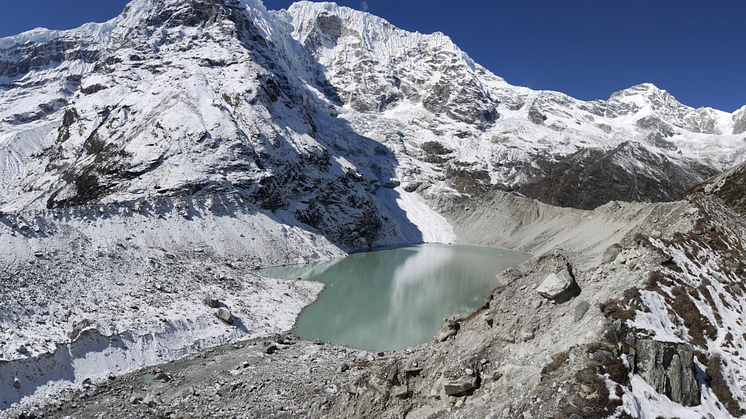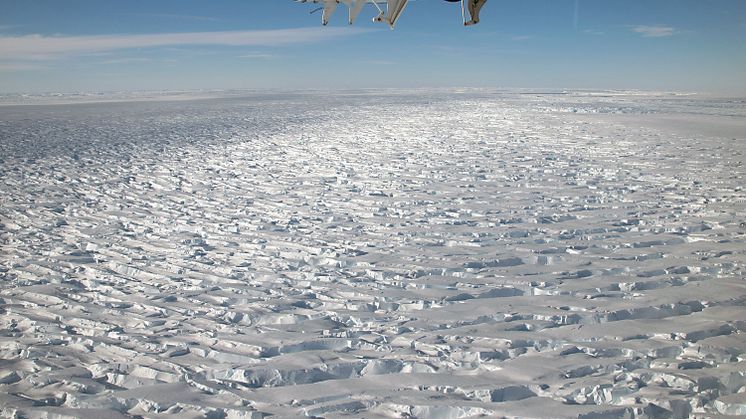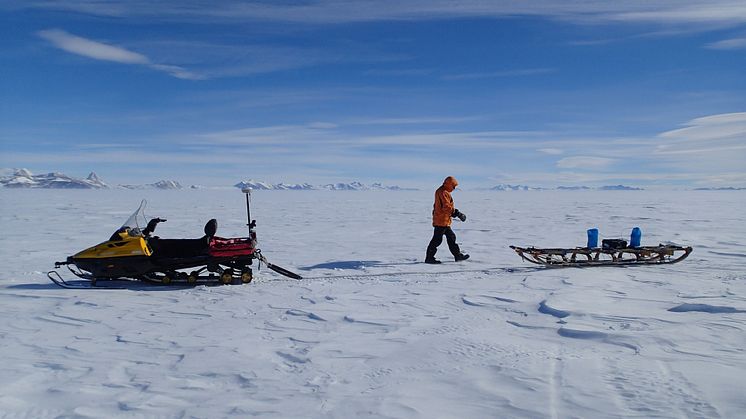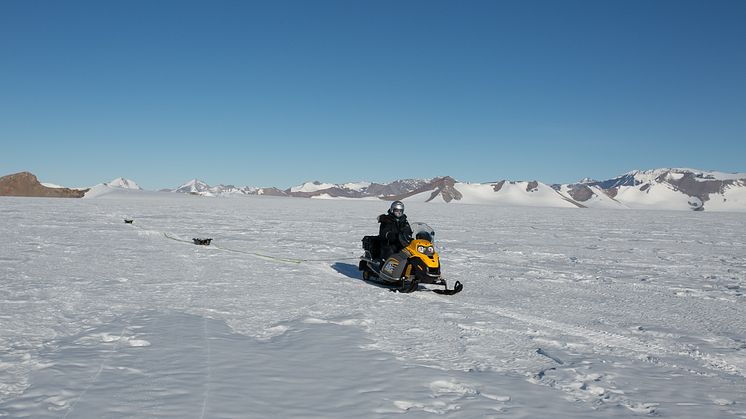
Press release -
Almost 800 subglacial lakes catalogued for first time in new global inventory
The world’s first inventory of subglacial lakes has been compiled, providing researchers with a comprehensive directory of where the lakes are and how they are changing in a warming climate.
Subglacial lakes can form underneath ice sheets or glacial valley regions. They can play a critical role in the speed at which ice flows into oceans and, when on land in mountainous regions, could pose a major risk to populations downstream if they were to drain and cause flooding and landslides.
It is believed that there are many thousands of subglacial lakes worldwide but until now, their details were not collectively held and there was no clear picture of the size, stability and characteristics of the lakes.
An international team of researchers has now catalogued data on almost 800 lakes in Antarctica, Greenland and Iceland as well as in glacial valley regions such as the Alps.
The inventory, which has just been published in the Nature Reviews journal Earth & Environment, details the lake environments and dynamics, their size, how they behave and the impact on their local area.
The inventory provides a knowledge base of the current status and location of the lakes, allowing scientists to assess any future changes as the climate warms, and also highlights the gaps in collective knowledge that will help researchers to focus on new areas in future.
While 80% of the lakes were found to be stable – meaning they have no addition or removal of water at all, or they have a balanced inflow and outflow – the researchers were surprised to see that 20% of lakes are active. This means they can drain suddenly and catastrophically, posing a hazard to human populations and infrastructure downstream.
Geophysical data currently available means that the majority of lakes included in the inventory are in Antarctica. The researchers have called for future studies to focus on valley glaciers, ice caps and the Greenland Ice Sheet to gain a better understanding of water storage and drainage beneath glaciers in vulnerable areas.
Dr Kate Winter, Senior Lecturer in Northumbria University’s Department of Geography and Environmental Sciences, was one of the researchers involved in the review.
She explained: “Subglacial lakes are fascinating. They can occur due to meltwater from the surface of the glacier travelling to the base and lying in hollow areas or cavities, or they can occur due to geothermal heating from the earth below warming the ice above and causing it to melt.
“The lakes are protected by a layer of thick overlying ice which insulates it from the cold air above, preventing them from re-freezing and can exist alone for millions of years, harbouring unique life forms, or they can fill and drain over hourly timescales.
“These lakes can lubricate the base of the glacier or ice sheet and make ice flow faster, contributing to global sea-level rise. In populated regions such as the Alps, the sudden release of subglacial lake water can cause catastrophic damage to life and infrastructure.
“It is therefore important to study where subglacial lakes are, how much water they contain, how stable or active they may be and how they might be changing over time so we can learn more about why they form and what influence they may have on the local area.”
Lead author Dr Stephen Livingstone, from the University of Sheffield’s Department of Geography, said: “Innovations in radio-echo sounding, swath radar technology, satellite altimetry and high-resolution time-stamped digital surface models have confirmed the widespread existence of subglacial lakes over the last five decades.
“Our inventory will enable researchers to evaluate subglacial lake environments and their dynamics across different regions. As the ice above subglacial lakes responds to climate change, lakes that were once stable may become unstable, and vice versa.
“Now we have a better understanding of how many lakes are stable just now, we can monitor how this changes with time. These changes are not just important for water and ice flow, but also for the lifeforms that exist in the lakes.”
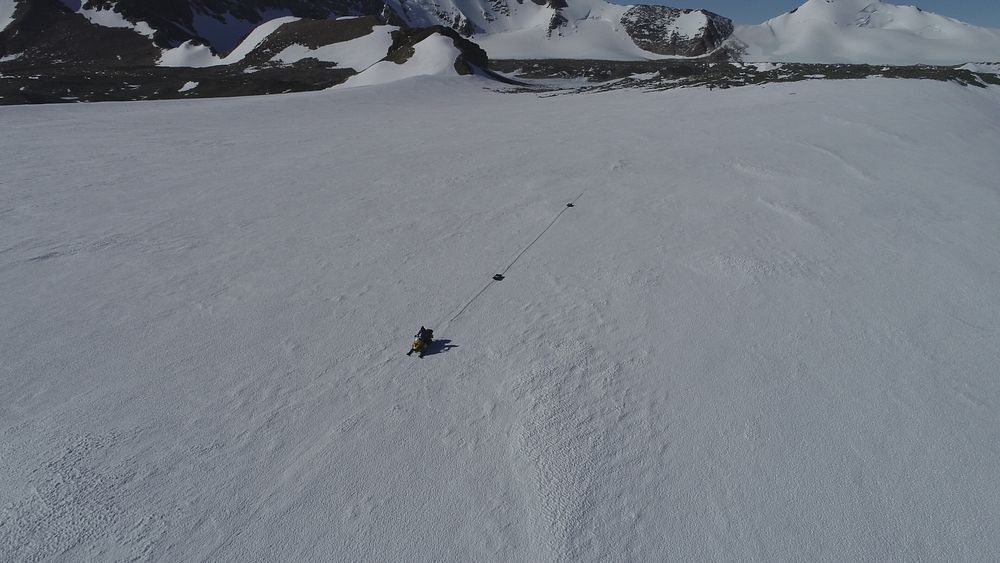
The 773 lakes catalogued in the inventory include 59 which have been newly identified in Antarctica. Many of these lakes – some of which measure up to six miles in length and are under 3,000 metres of ice – were discovered by Northumbria student Becky Sanderson.
Becky was studying Northumbria’s Environmental Monitoring, Modelling and Reconstruction master’s programme and found them while researching transects of ice-penetrating radar data collected across East Antarctica for her dissertation.
She is continuing to study the transects as part of her PhD studies on the renowned One Planet doctoral training programme – a specialist partnership between Northumbria and Newcastle Universities and the Natural Environment Research Council to train the next generation of research scientists and future leaders needed to address global change.
Becky said: “After hearing a number of inspiring talks I spoke with my master’s tutor, Dr Winter, about the uses of the ice-penetrating radar in the search for subglacial lakes. She led me to the data set that I used to find these new lakes.
“Seeking new knowledge is key to academic research. Therefore, finding new subglacial lakes through my master’s work was incredibly exciting. Being able to work on such a high impact paper and collaborating with a wide range of talented people in the scientific community was a great opportunity for me.”
Northumbria is one of the UK’s leading universities for undertaking research into extreme environments and is believed to have the largest team of cold climate researchers in the country. Researchers are involved in major international studies including leading roles in the £20 million UK/US International Thwaites Glacier Collaboration and a £4 million study assessing tipping points in the Antarctic climate system.
The paper Subglacial lakes and their changing role in a warming climate is now available in Earth & Environment.
Topics
Categories
Northumbria is a research-rich, business-focused, professional university with a global reputation for academic excellence. Find out more about us at www.northumbria.ac.uk --- Please contact our Media and Communications team at media.communications@northumbria.ac.uk with any media enquiries or interview requests ---








